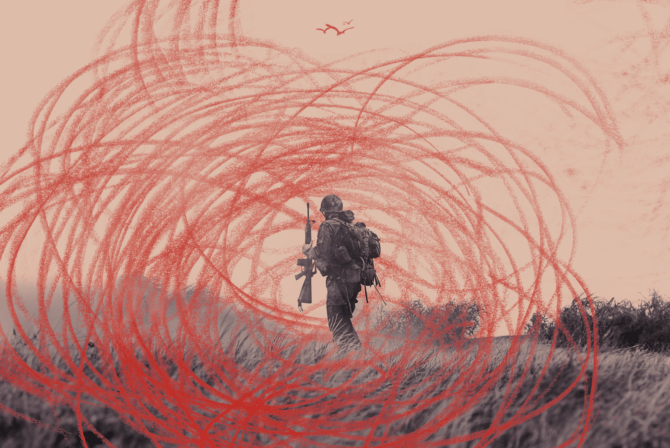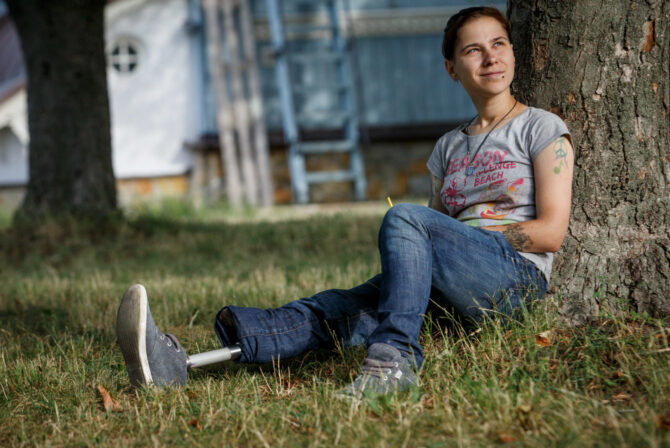During the full-scale invasion, many architectural monuments in Ukraine were damaged, Russian missiles destroyed countless others, and some buildings became abandoned due to various circumstances. Thus, there has been a growing demand for organizations that could take care of the protection and restoration of architectural heritage in cities across the country. The Renovation Map is one such organization that has been working to preserve historic buildings since before February 24, 2022.
Since 2019, the team of several dozen proactive volunteers has focused on locating damaged monuments in Kyiv, researching their history, and facilitating their renovation. They have put all the objects on an interactive map so that anyone interested can learn more about the buildings needing protection. So far, only the map of the capital has over 300 monuments. After the full-scale invasion began, the organization expanded its focus to include researching architecture in other cities and working with proactive citizen groups there.
We spoke with the team at The Renovation Map about the organization’s work during the war, the citizens who act as agents to help locate and renovate architectural heritage, the collaboration with advocacy groups, and how each of us can help preserve historic monuments. The team consists of co-founders and architects Dasha Korba and Yevhenia Skok, co-founder and researcher Kseniya Paltsun, partnership manager Maria Panchenko, research curator Serhiy Ladik, architectural researcher Ivan Dovhun, and communications manager Anna Shevchuk.
§§§
[This publication has been created with the assistance of the European Union]
§§§
How did the idea for your organization come about? How did its story begin?
Dasha: I am an architect by training, and at some point, when I was working in a commercial bureau, I realized that I wasn’t really interested in new construction. I was interested in renovation, in reusing what was already there. I particularly cared for abandoned places.
I was in Kyiv the other day, and walking around the Podil neighborhood with a friend, I saw so many abandoned buildings. They all have very complicated décor and were built in different periods. As an architect, I immediately wondered how they could all be renovated. Later, I looked for more information about it and didn’t really find anything. That’s when I had a concrete idea for this project.
We needed a big map where you could click on the objects and read all the details about them. I shared this idea over a glass of cider with my friend Liza Pasichnyk, who supported it. So our work began. First, we collected all the information available online and then told our friend Serhiy, a software engineer by training, about our idea. He said this was a fascinating technical challenge and that he’d love to work on it.
Initially, we simply searched through the data, systematized it in tables with addresses, short descriptions, and photos—whatever we could find—and tried to record it all. We also started writing short Facebook posts about our findings. At that time, new volunteers who shared our ‘urbanist views’ joined us.
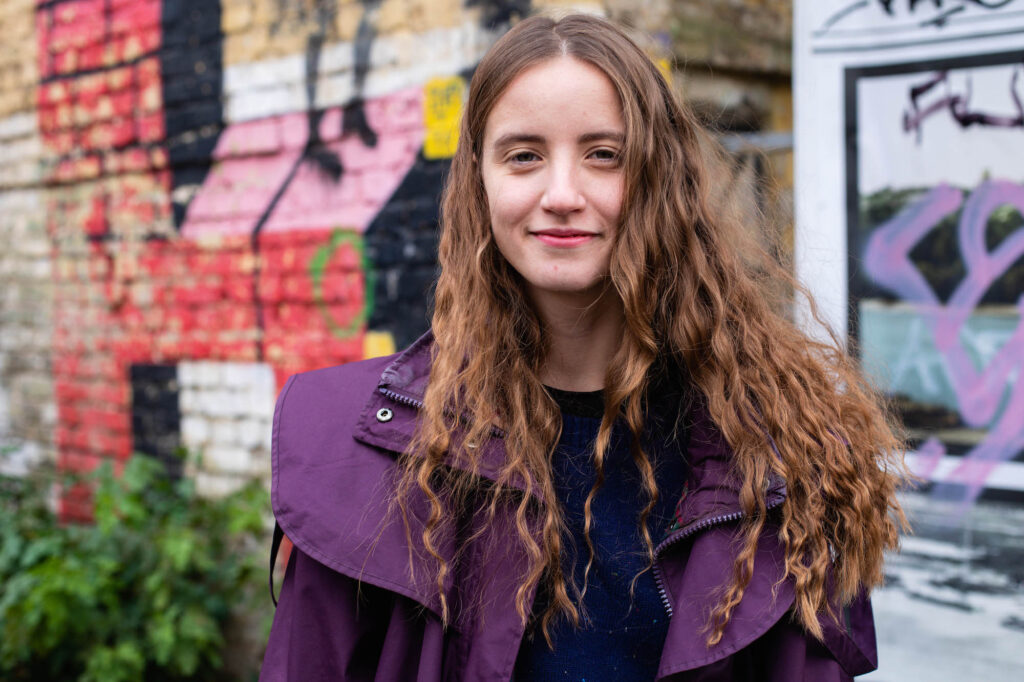
One day, Serhiy told us about this great competition, the Open Data Challenge. That’s when we realized that our work was also about open data, just in the context of architecture. We sent in our application and were selected for the Open Data Incubator. We met many experts there who helped us narrow the concept and identify our target group. We got access to a set of tools that helped us kick-start our project. After this program, we received a grant to research the Shevchenkivskyi district in Kyiv and to create and publish a map. So this is where our organization has its roots.
I would like to quote Vita, the co-founder and architect of The Renovation Map.
She said that we started with an online database of abandoned buildings in Kyiv and have evolved into a project that aims to preserve historic Ukrainian architecture.
There is a large section on your platform dedicated to your team. How has your team evolved since the launch of The Renovation Map?
Ksenia: Our team grew very organically. People met regularly offline, and those who were proactive and engaged and contributed to brainstorming formed a kind of backbone based on shared experience.
Most people on the team have been with us for three or four years, but we also have new members. These people contribute much to the organization’s work, work systematically as volunteers, and help with various tasks.
We are all very different, but The Renovation Map and our shared values form a foundation that holds us together. Respect is crucial, as is the ability to communicate well with each other, make democratic decisions, and solve problems internally.
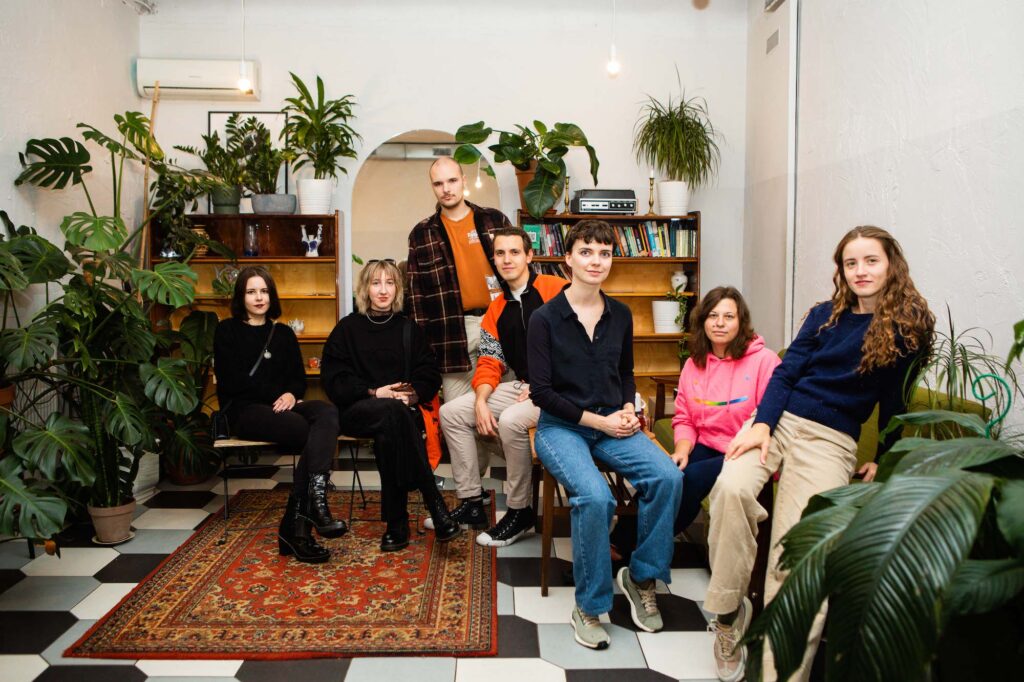
How many people are currently involved with your organization?
Ksenia: There are 13 team members and around 40 volunteers who join us for specific tasks. About 20 experts help us with their expertise.
Can people interested in working on The Renovation Map still join your team as volunteers? And if so, what kind of specialists do you need?
Serhiy: We are currently developing a new concept for volunteer engagement to make this process more sustainable, targeted, and mutually enriching, both for us and the people who contribute to our efforts.
Different tasks need people with different skills. We need researchers who would like to learn more about particular buildings and possibly research them further. We also need people to help us with communication and fundraising
Dasha: There are core activities that are done by volunteers and also countless micro-tasks that everyone can contribute to. Let’s say a building is being demolished. We always explain to people what they can do about it. We give clear instructions on how to call the police and what wording to use in a police report. Anyone can use this and do something for a good cause. We often ask our subscribers to keep an eye on historic buildings. So it’s like a network of residents who double as agents and alert us to all kinds of situations.
How can Ukrainians support your organization?
Ksenia: I can single out three areas of support. The first is the promotion of information. The larger the audience, the more proactive citizens can help with practical tasks. Many people can’t work on the ground, but they can stay on the topic and spread the word.
There is also practical help. People can participate in public debates and networking sessions, take action when they notice manipulation in interpreting heritage protection laws or come to court hearings and art campaigns where we are involved.
And, of course, there is also financial help. We all work on a voluntary basis and receive grants from time to time, but these do not cover all the work we do. So donations are very welcome. We have accounts with Patreon, Benevity, Buy Me a Coffee, and Fondy.
Dasha: People can also help us and reduce our workload by setting up their own action groups to save the buildings scheduled for demolition. We will guide them, advise them, and provide them with all the necessary tools. We are working on some cases systematically but cannot handle everything, so we are happy to support such action groups.
What does Kyiv’s architectural heritage mean to you, and why do you think it is so important to work to preserve and protect it?
Yevhenia: For us, the architectural heritage of Kyiv is an enormous resource and a common good that we all share and must protect. Kyiv is an ancient, diverse city, vibrant and fascinating, and its architecture reflects this vibrancy.
We must not leave behind less architectural heritage than our ancestors have passed down to us.
That is why we strive to protect all buildings, including the ‘background architecture,’ because the background is also important. This is how the spirit of the city is formed, and the spirit of the city is a sense of its history, the continuity of generations, and our urban resource
Dasha: I think this is exactly what The Renovation Map values. People used to divide themselves into groups: Some preferred hundred-year-old architecture, while others went for modernism. Each group chose its own focus and only worked with that.
But we have a broader base: We respect the architecture of every period and are equally committed to buildings from different eras.
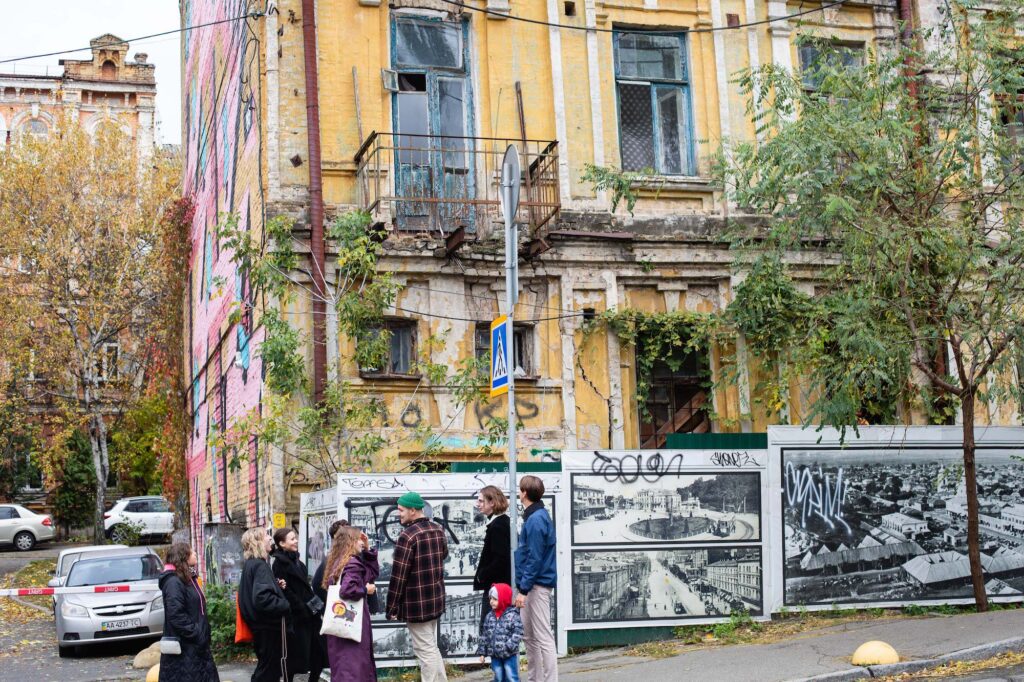
How long does it take you to find the buildings that need to be restored and preserved and collect all the necessary details?
Serhiy: Building searches can often be a day trip where the whole team gets together and walks around the city looking for abandoned buildings a little further away from the public eye and documenting our finds. Sometimes proactive volunteers alert us that this or that building is about to be demolished, so we find those immediately.
The research itself consists of two parts: an info card and a detailed survey. An info card includes a minimum of data, for example, a photo and the name of a building, so it can be mapped. This process takes one to two weeks.
What follows is a detailed survey. It is either a matter of filling a single page on the website or preparing a heritage designation application. If legal proceedings are initiated, we also carry out legal research. This phase takes about a month, depending on the data we seek.
Dasha: I always like to mention the case of Osyp Rodin’s House. We’ve been working with this building for three years now. When we just started the research, there was literally zero information. It took us between six and nine months to get a complete picture.
If you googled ‘Osyp Rodin’s House’ in 2018, you would find nothing, but now everything is available online: Archive data, historical photos, essays, news articles, etc.
The process of researching this building is really telling because we started out with nothing and spent months searching for the information.
You’ve just mentioned Osyp Rodin’s House. What other successful stories and cases does The Renovation Map have to its credit?
Anna: We consider it a success if we manage to save a building from demolition. There are currently around ten such cases. These are mostly buildings but also more ‘exotic’ objects such as the Voznesensky Caves. Our volunteer, Dmytro Perov, discovered these caves from the 12th century last year. The Renovation Map provided the impetus to place them under protection, and archeologist Tymur Bobrovskyi has prepared the application for the historic heritage status.
Another important case is the shielding of the stained glass windows at the Kyiv cable car stations. We did that in 2022. Together with Solomianski Kotyky, a citizen action group, and Kyivpastrans [a municipal company that runs public transportation in Kyiv], we installed protective devices to shield the stained glass windows in the lower and upper stations from small pieces of debris. Volunteers from The Renovation Map made the designs and the structures, and climbers from the Solomianski Kotyky group helped with the installation. The whole community came together in this case, as the initiative was crowdfunded.
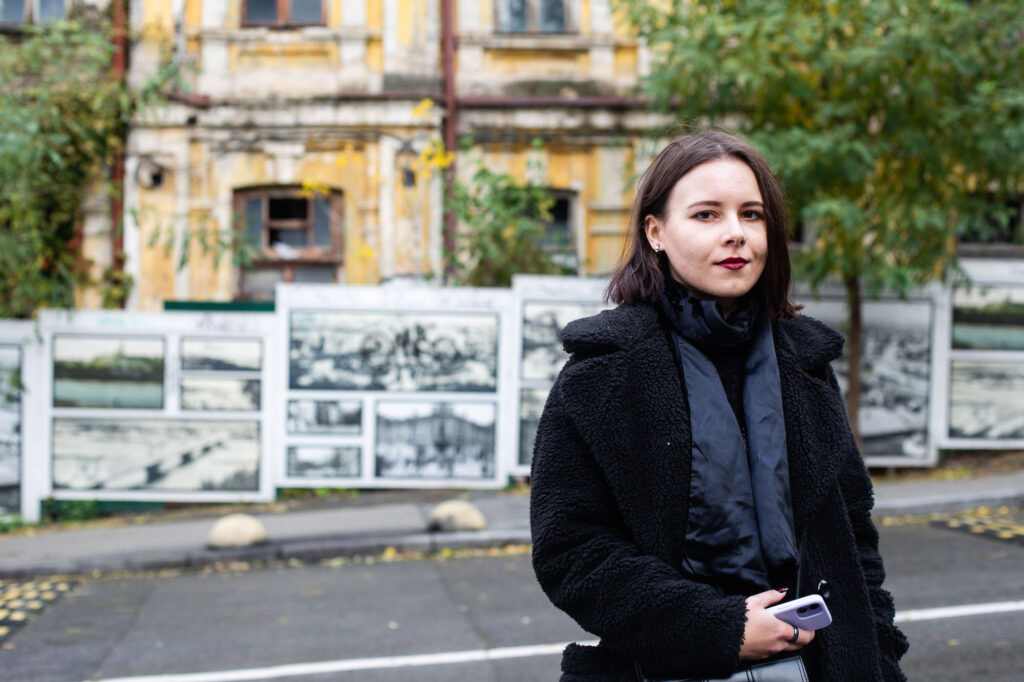
Dasha: We also launched the project “In Search of the Abandoned Podil.” We researched the specific architecture of this neighborhood and, based on this, developed a hands-on course for activists to protect the historic heritage. It is a series of 12 lectures on the reasons for protecting architecture, the value of buildings from different eras as exemplified by the Podil architecture, the legal aspects of protection (actions people can take; legal basis of heritage protection), and renovation.
How do you interact with the local government?
Dasha: We work with the local government in several areas. First, court proceedings. Our first court case was in 2020, and before that, I could never have imagined that our team would have to deal with something like this. But at some point, we even had to speak in court. We side with the local and national government authorities to protect the buildings. At the moment, proceedings are underway regarding Osyp Rodin’s House and the Flowers of Ukraine building, and in both cases, we have worked with the Department for the Protection of Cultural Heritage, the Ministry of Culture, the prosecutor’s office, and the local community.
Our collaboration takes a different form when a building is slated for demolition. Depending on the type of violation, we file a complaint and request an inspection or a cease and desist order.
In the summer, you resumed your curated tours through Kyiv. Are you planning to continue doing this regularly?
Ivan: These curated tours are not a new tradition—it’s almost three years old. This summer, we’ve just taken them up again and introduced a new route. The demand was so great that I traveled to Kyiv in the middle of my studies in Lviv to do a few additional tours.
And it’s not over yet. Even if it gets colder, that doesn’t mean you can’t do any more tours. We are currently in the process of developing at least three new routes. Maybe we will even reopen the old ones at some point, as demand remains high.
Ksenia: We have also compiled a guidebook series for independent tours. People can follow the route and explore things at their own pace.

Are you thinking about developing further educational initiatives so that we Ukrainians can learn more about our architecture?
Yevhenia: In the coming weeks, we want to publish an architectural glossary to familiarize more people with this topic. We hope this will motivate them to learn more about architecture and research the history of buildings.
Ksenia: Speaking of the new reality, we have recently completed our first research project on the restoration and protection of architectural heritage in countries that have experienced war, using the example of Bosnia and Herzegovina. We may carry out more such research in the future. The results have been published in printed and digital form, and we have also hosted a discussion with experts from Bosnia and Herzegovina and Ukraine to present this project.
You have been working on The Renovation Map for many years now. How has your work changed during the full-scale invasion?
Ksenia: We were naturally quite confused in the early days of the full-scale invasion. It took us a few months to get used to the new places and life and get back into shape. The first thing we did was collect donations for our volunteers and colleagues who had joined the Ukrainian armed forces. Then we realized that we had to return to our professional work, which was as important as ever.
We launched a new project, The Destruction Map, in which we published our research on the architectural heritage in Chernihiv that was destroyed during the war. We explored the areas that had already been liberated at that time. There was no more active fighting there, and it was possible to draw some conclusions about the condition of the buildings. We also began to try to protect the architectural heritage in the cities we had evacuated to.
Countless historic buildings were damaged during the full-scale invasion. Are there any architectural monuments that you mourn the most?
Yevhenia: I would say that we mourn any damage because our aim is to protect the architectural heritage in its entirety. Of course, restoring some objects, such as wooden buildings, will be practically impossible as they can only be reconstructed. Moreover, we have no idea what’s happening to historic objects in the occupied territories. And then, all cities suffer today, and each has its own local monuments.
Unfortunately, the developers only stepped up their game during the war. Now they have a sort of an opening when they can work even faster because people can’t take to the streets to protest, because there is a curfew, and because public resources are limited.
Maria: I remember a Lebanese activist saying that not as many monuments were destroyed during the war as during the reconstruction. The historic heritage was badly damaged because people tried to rebuild everything quickly and create something new. Not everyone treated old buildings with respect
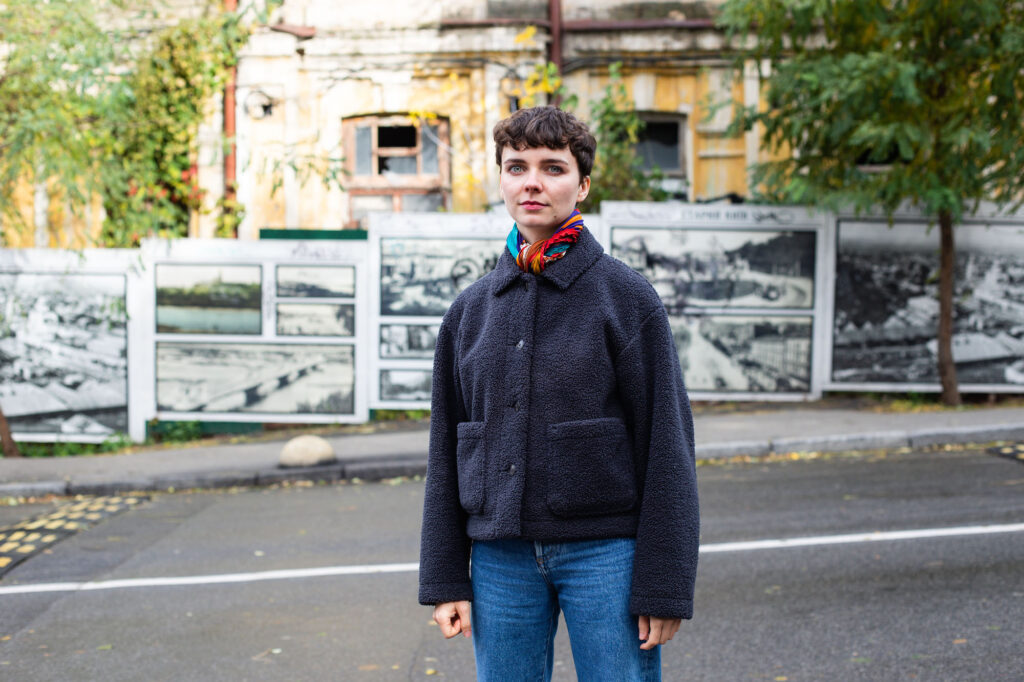
How can we protect our architectural heritage during the war?
Anna: It depends on what you want to protect them from. When it comes to enemy attacks, we have to rely on our air defense systems because there is no real protection against direct hits. But then we can and must take preventive measures to protect ‘fragile things’ from the effects of the blast wave, as happened with the stained glass windows in the cable car stations.
Another problem is protection against illegal demolition attempts because developers never sleep. In this case, all the methods we have mentioned are effective: public monitoring, legal proceedings, appeals to the prosecutor’s office, and calling the police to the site of the violation. The more attention is paid to a particular monument, the greater the chance it will be saved rather than destroyed. So the main principle remains the same: residents must be concerned about illegal demolition. Public rallies are banned for now, but people can find alternative ways to meet near the monument. They can hold lectures on-site or organize cultural events such as exhibitions and networking meetings. All it takes is imagination and the willingness to act.
Dasha: I would like to add that when we were working on the stained glass windows at the cable car stations, we were asked by the restorers to take high-quality photos of these windows. That way, they could try to reassemble them using the photos in the event of a direct hit.
Photographing and recording monuments is one of the most important tasks. It is a way of preserving our heritage in digital form.
Such a large team needs a lot of resources to work. Where does your organization get money from?
Maria: As I said, all team members are volunteers, but of course we still need money. There are things we can’t cover ourselves, for example, expert legal support, which is not cheap. We are involved in several proceedings at the same time—but there could be many more if our resources were unlimited. If we had enough money, we could also do more research and historical investigations to prepare heritage designation applications and request historic heritage status for buildings.
Some people support our work through donations. We really appreciate this because it helps us cover one-off expenses such as court fees or printing materials like applications for heritage designation or posters for public campaigns.
A few court cases we are involved in concern the project “Protecting Historic Architecture in Court.” It is a partnership with the NGO “Public Control Platform” and is financially supported by the European Union. Thanks to this project, our organization, together with the law firm Axon Partners, can defend two historic buildings in court—a 140-year-old Osyp Rodin’s House and a modernist building, the Flowers of Ukraine. This was made possible by funding, which covered legal fees, and donations from the community, which were used for administrative costs. (In December 2023, it became known that The Renovation Map won the court for the protection of the Flowers of Ukraine — TU).
We also received funding in October to expand the institutional capacity of The Renovation Map. This kind of support is crucial as we can now focus more on the ‘inner workings’ of the organization and acquire new skills, which will positively impact our effectiveness as an institution that cares for historic buildings. The Renovation Map is carrying out this initiative as part of the Phoenix Project run by East Europe Foundation and funded by the European Union.
There are also some one-off projects. On Kyiv Day, local fashion brand O.Taje offered to donate part of the proceeds from selling its limited-edition collection of chestnut leaf T-shirts to The Renovation Map. This helped us cover some of the legal costs.
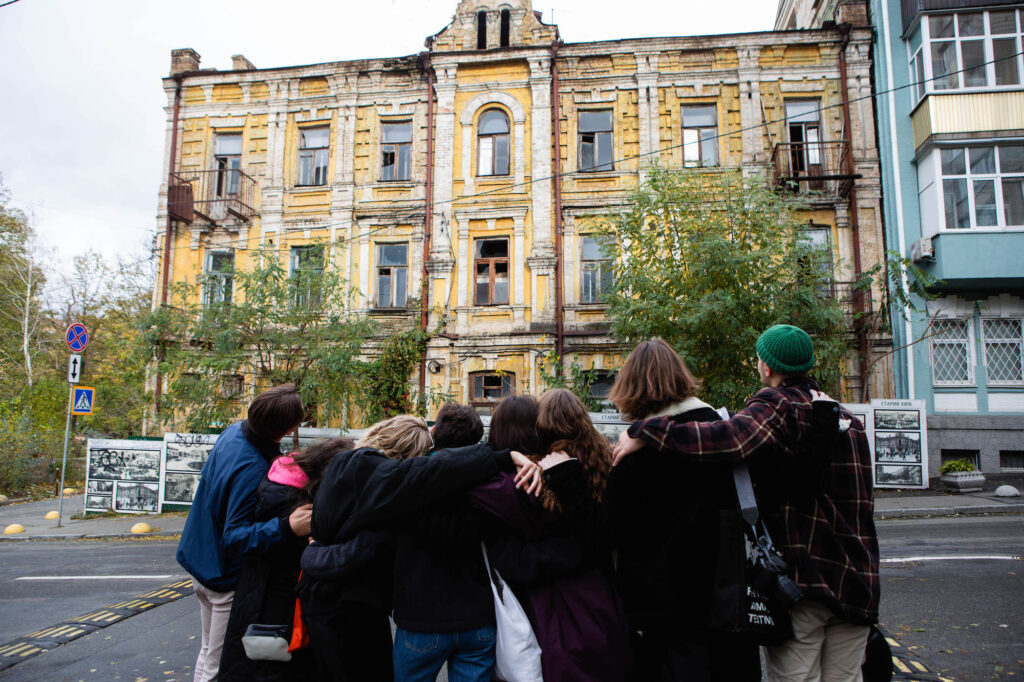
As we can see on the map, you monitor the condition of historic buildings not only in Kyiv but also in Chernihiv, and you have often posted on your social media about the monuments in Ivano-Frankivsk, Ternopil, and Odesa. Are you planning to expand your work to other cities in Ukraine and explore their architectural heritage as well?
Serhiy: In Chernihiv, we launched the Destruction Map project to respond to the full-scale invasion. We wanted to contribute to protecting and documenting the monuments damaged during the war. In other cities, it was more of a spontaneous action, where we found and documented abandoned buildings on every business trip and then told people about them and added them to the map.
When it comes to scaling, the perfect model would be to communicate and collaborate with local communities who can provide local experiese and volunteers on the ground. We’d reinforce their work with our know-how and research methods and collaborate on research in other cities.
Finally, when we talk about the Renovation Map as a non-governmental organization dealing with heritage protection, the ideal model would be to assemble local teams of three to four activists, each with their own expertise, to protect specific buildings. We are also ready to give them expert support wherever they are.
Dasha: This kind of collaboration with other cities is already underway. Public activists from all over the country are contacting us and asking for consultations on various issues. An organization from Nova Kakhovka has recently reached out to us and proposed to add the buildings in their city to our map. The technical process has yet to begin, but the idea alone is amazing as they have wonderful local expertise. They have photos and information about the buildings and just need a platform to publish it all.
Working with other cities really inspires me because no one is as committed to protecting architectural heritage as the locals who stand up for their historic buildings.
It would be great if every city had its own little renovation map.
This publication has been created with the assistance of the European Union. The authors are solely responsible for its content, and the opinions expressed do not necessarily represent those of the European Union. The NGO “The Renovation Map” received funding for its initiative “Protecting Historic Architecture in Court” as part of the project “Strengthening the Role of Civil Society in Upholding the Rule of Law Through the Court System,” which is being implemented by the NGO “Public Control Platform” with financial support from the European Union. Institutional support for the NGO “Renovation Map” was provided on a competitive basis within the framework of the Phoenix Project run by East Europe Foundation and funded by the European Union


